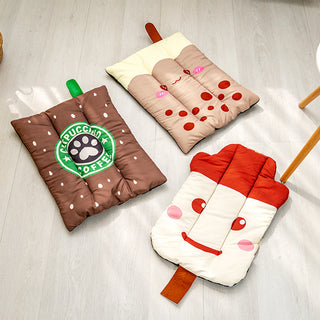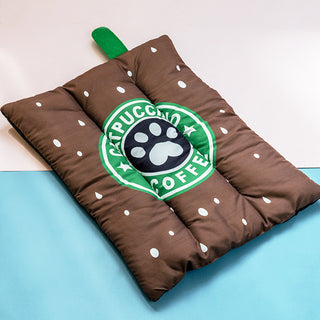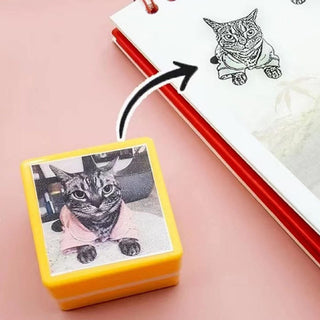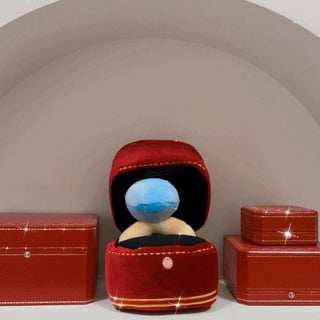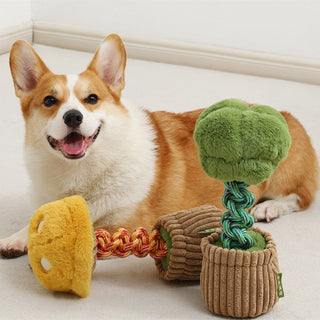Introduction to Cat Silvervine Toys
Silvervine is a magic word in the cat world. Think of it as catnip's exciting cousin; it drives cats wild and boosts their mood. Originating from the mountains of East Asia, silvervine is a natural plant that many cats adore. Want to see your cat leap with joy and play like a kitten again? This is your go-to. Now, crafting DIY toys with silvervine isn't just about fun. It's also about creating safe, tailor-made toys that match your cat's unique playstyle. With a pinch of creativity and basic materials, you can whip up toys that keep your cat entertained and active. In this guide, we'll dive into making these purr-fect playthings. So sharpen those scissors and get ready to transform simple items into your cat's new favorite toys. Remember, happy cat, happy life.

The Benefits of Silvervine for Cats
Silvervine isn’t just a random plant; it's a secret weapon for cat owners. Originating from the mountains of East Asia, this natural herb is like catnip but supercharged. It holds the power to entertain even the most bored or indifferent felines. When cats get a whiff of silvervine, they dive into a state of bliss. This isn’t just fun to watch; it’s beneficial for their mental health. Rolling, purring, and “hunting” the silvervine toy can reduce stress and keep them active. Especially for indoor cats, these activities are vital for warding off obesity and maintaining agility. Plus, silvervine promotes dental health. Chewing on these toys helps clean their teeth, battling plaque buildup without a trip to the vet. So, by introducing a simple silvervine toy, you're not just spicing up your cat's playtime; you're investing in their overall well-being.
Materials Needed to Make Your Own Cat Silvervine Toy
To make your own cat silvervine toy, you won't need many fancy tools or expensive materials. Here's what you'll need: fabric scraps or old socks, natural silvervine sticks, and a sewing kit if you're planning to stitch things up. Fabric scraps or old socks work great as the body of the toy. Just make sure they're clean and safe for your cat to chew on. Next, silvervine sticks are the magic ingredient. Cats love them more than catnip, and they're totally safe for kitties. You can find them at pet stores or online. Lastly, a simple sewing kit will do if you plan to sew the fabric into a toy shape. You can also use fabric glue if sewing isn't your thing. Remember, making these toys is about having fun and bonding with your cat, so there's no need to stress over perfection.
Simple DIY Silvervine Toy Ideas
For cat owners looking to spice up their feline's playtime, DIY silvervine toys are a great choice. Silvervine, a plant known for its euphoric effect on cats, similar to catnip, can make an ordinary toy irresistible. Here are some simple ideas you can try at home. First, a Silvervine Sock Ball. Grab a clean, old sock. Stuff it with cotton or spare fabric pieces, and sprinkle liberally with silvervine powder. Tie the open end into a knot, and you have a bouncy, enticing toy. Second, Silvervine Sticks Teaser. Tie a few silvervine sticks together with a durable string, and attach it to a stick. Wave it around or drag it on the ground to mimic prey movements. It's perfect for interactive play. Lastly, consider the Frozen Silvervine Treat. Mix wet cat food with a sprinkle of silvervine powder. Pour the mixture into ice cube trays and freeze. Ideal for a hot day, it's a refreshing way to introduce silvervine. These ideas are easy, cost-effective, and safe, ensuring your cat gets the enjoyment and stimulation it deserves.
How to Ensure Your Cat Silvervine Toy is Safe
When you decide to make a DIY silvervine toy for your cat, safety is key. Cats have different reactions to toys, so observe how yours plays to avoid any risks. Use natural, untreated materials. Stay away from plastics or anything that could break into sharp pieces. Ensure all parts of the toy are firmly attached. Loose bits can be swallowed, leading to choking or internal blockages. Regularly check the toy for wear and tear, replacing it when it starts to fall apart. Stick to these guidelines, and you'll make a toy that's both fun and safe for your furry friend.
Step-by-Step Guide to Creating a Basic Cat Silvervine Toy
First, let’s grab what you'll need: a small sock or fabric scrap, scissors, and some silvervine powder. Got everything? Great. Let's make that toy. Lay the sock or fabric flat on a table. If it’s a sock, make sure it’s clean—your cat doesn’t want your stinky socks. Now, carefully cut a piece big enough to hold a couple of tablespoons of silvervine but small enough for your cat to easily play with. Next step, pour a hearty spoonful or two of silvervine into the center of the fabric. Don’t overdo it; you want to make sure it can be easily sealed without spilling. Now, the fun part: bring all corners of the fabric together and tie a tight knot at the top. Make sure it’s secure. We don’t want any silvervine escaping during an intense play session. Give it a good shake near your cat. Watch as the magic of silvervine takes over, and your cat becomes intrigued, if not a little wild, with play. Congratulations, you’ve just made your first cat silvervine toy. Simple, wasn’t it? Keep it up, and your cat will have a new favorite in no time.
Tips for Making Durable and Entertaining Silvervine Toys
When making silvervine toys for your cat, durability and entertainment are key. First off, you'll want to select sturdy materials that can withstand a cat's clawing and biting. Think about using thick cotton rope, tough felt, or heavy-duty canvas. Next, remember, cats love intrigue and variety. Mix things up by incorporating textures and shapes that stir curiosity. Knots, loops, and dangling elements can make a simple toy much more interesting. For the silvervine aspect, ensure the silvervine powder is securely embedded within the toy or in a sachet that's safely sewn shut, so there's no risk of spillage. Consider adding a little bell or some crinkly material inside the toy for extra auditory excitement. Always double-check all parts are tightly secured to avoid any choking hazards. Making your toy washable will also add to its durability, ensuring it can be cleaned and remain safe for your cat to play with. Remember, the goal is to provide a toy that'll keep your cat engaged and allow them to safely enjoy the euphoric effects of silvervine.
Creative Variations on Standard Cat Silvervine Toys
Cats love variety, and tweaking standard silvervine toys can significantly enhance their play. One simple twist is adding feathers or soft fabric strips to silvervine sticks. This addition taps into cats' instincts to hunt and provides them with more engaging play. Another variation is to mix silvervine powder with a little bit of catnip and fill it into homemade fabric toys. This combo drives cats wild and keeps them engaged longer. Consider crafting a silvervine puzzle toy, where the cat needs to solve a simple puzzle to reach the silvervine. This not only entertains them but also stimulates their brain. You don’t have to complicate it; sometimes, just packaging the silvervine differently, like putting it inside a small, safe container that rolls or bounces, can turn an ordinary playtime into an adventure. Remember, the goal is to keep things safe and exciting for your furry friend.
How to Introduce Your Cat to the New Silvervine Toy
Bringing a new toy into your cat's life, especially one with silvervine, needs a bit of strategy. Cats are creatures of habit, and they might not jump on the silvervine bandwagon right away. Here's the deal - start by letting your cat sniff the toy. Cats explore with their noses, and that first sniff is like them reading a book about the toy. Once they’ve had a good sniff, casually place the toy near their favorite hangout spot. Don’t force it on them. Imagine someone following you around with a new gadget; you’d be annoyed, right? That’s how your cat feels. Leave the toy there and let curiosity do its work. Your feline friend might ignore it at first, but give it time. Silvervine has a more potent effect than catnip for many cats, so once they catch onto the scent, they'll likely show interest. If after a day or two, they still seem indifferent, try gently rubbing the toy against their paws or face. This action mimics their natural behavior of marking things with their scent. Remember, patience is key. For some cats, it’s love at first sniff, while others warm up slowly. Keep it chill, and let your cat set the pace.
Maintenance and Safety Considerations for Homemade Cat Silvervine Toys
When crafting DIY cat silvervine toys, two key aspects to keep a keen eye on are maintenance and safety. First, ensure all silvervine toys are securely made. Check for any loose parts or threads that could become choking hazards. Cats are naturally curious and vigorous with their toys, so durability is a must. Regularly inspect the toys for wear and tear and be ready to repair or replace them as needed. It's crucial to use non-toxic materials. Since cats will chew and possibly ingest parts of the toys, all materials should be safe if swallowed. Lastly, observe how your cat interacts with the silvervine toys. Some cats might get overly excited or aggressive. If you notice any negative changes in your cat’s behavior, it might be wise to limit playtime with these toys. Safety and maintenance go hand in hand to ensure your feline friend enjoys their playtime without any health risks.


